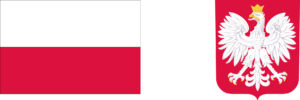
The Central Eastern European (CEE) region is witnessing a significant modernization of its customs procedures, primarily through the adoption of digital platforms. This transformation is pivotal in streamlining customs processes, reducing delays, and enhancing the efficiency of cross-border trade. The move towards digitalization in customs is in line with global trends and is particularly crucial for the CEE region, given its strategic position as a crossroads of international trade routes and its role in the European Union’s expanding market.
The modernization of customs in CEE countries involves several key components. Firstly, the implementation of electronic customs declaration systems is a major step forward. These systems allow traders to submit documents electronically, significantly reducing paperwork and processing times. In countries like Poland, Hungary, and Czechia, electronic declarations have streamlined the import and export process, facilitating quicker clearance of goods at borders.
Another significant advancement is the integration of risk management systems that use data analytics to identify potential security risks and customs fraud. This approach allows customs authorities to target inspections more effectively, thereby speeding up the clearance process for the majority of compliant shipments. For instance, Romania has been implementing risk analysis techniques in its customs operations, enhancing both security and efficiency.
The adoption of Single Window systems is also gaining traction in the CEE region. These systems provide a unified platform where traders can submit all required regulatory documents, simplifying the process and reducing the time and cost associated with cross-border trade. Bulgaria, for example, has been making strides in developing a Single Window system, improving its trade facilitation environment.
The transition to digital customs procedures is also closely linked with efforts to align with EU standards and regulations, especially for CEE countries that are EU members or aspiring members. The EU’s Customs Union requires member states to adhere to standardised customs procedures, which include digital reporting and processing. The modernization efforts in CEE not only enhance trade within the region but also facilitate smoother trade between the CEE countries and the rest of the EU.
However, the digital transformation of customs procedures comes with its own set of challenges. One of the primary issues is the need for significant investment in IT infrastructure and training. Ensuring that both customs officials and traders are proficient in using new digital systems is crucial for the successful implementation of these reforms. Additionally, there is a need for harmonisation of procedures and standards across different countries in the region to ensure seamless cross-border trade.
The modernization of customs procedures through digital platforms in the CEE region represents a critical step towards enhancing the efficiency and effectiveness of cross-border trade. By reducing delays and simplifying processes, these digital initiatives are not only boosting trade within the region but also strengthening its integration into the global trading system. As the CEE countries continue to navigate the path of digital transformation in customs, the focus will be on overcoming the challenges of implementation to fully realise the benefits of streamlined and efficient trade procedures.






